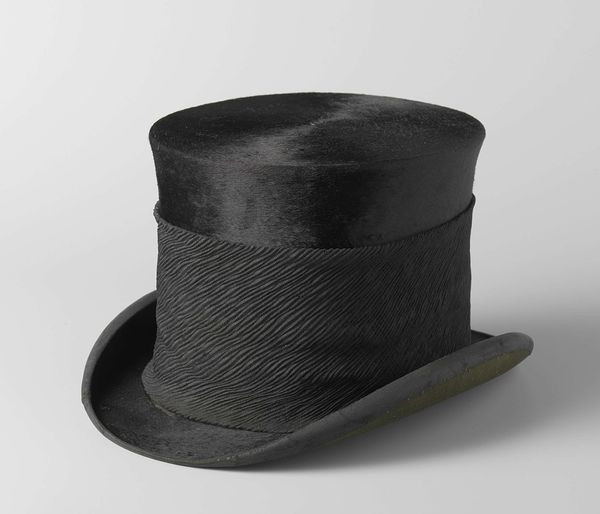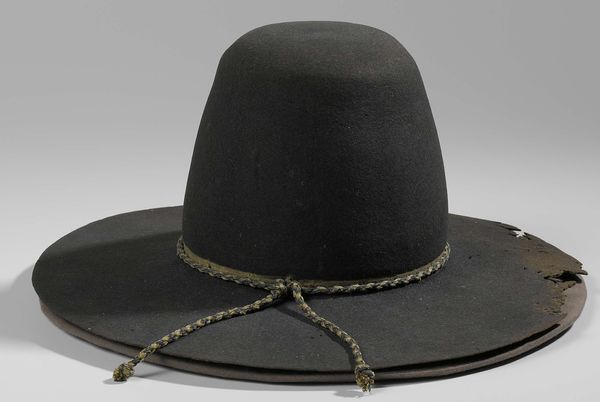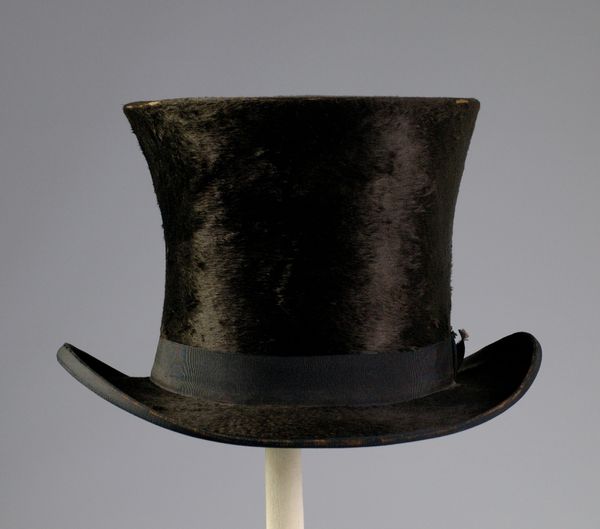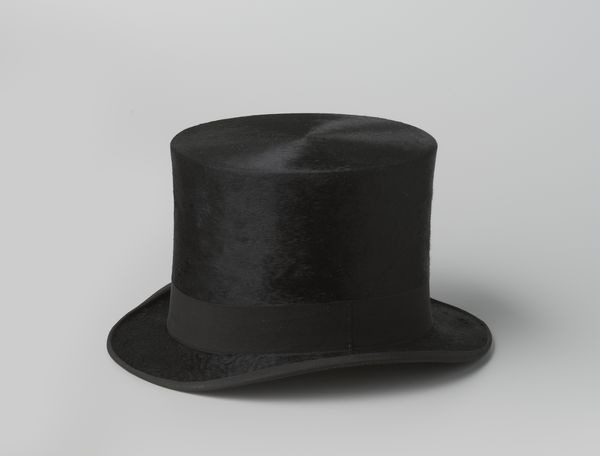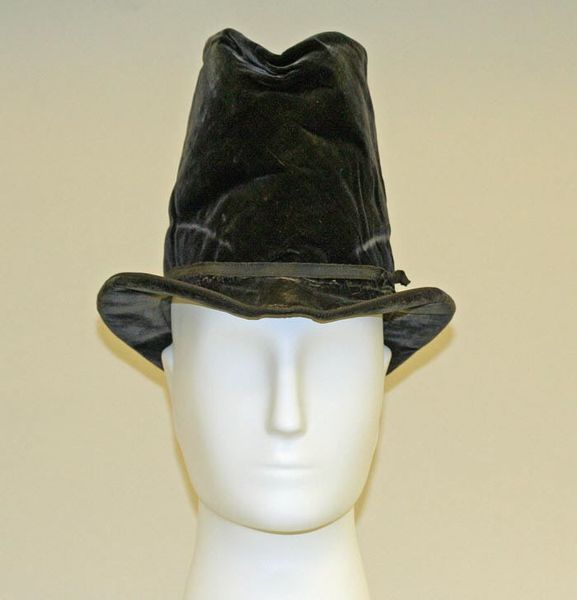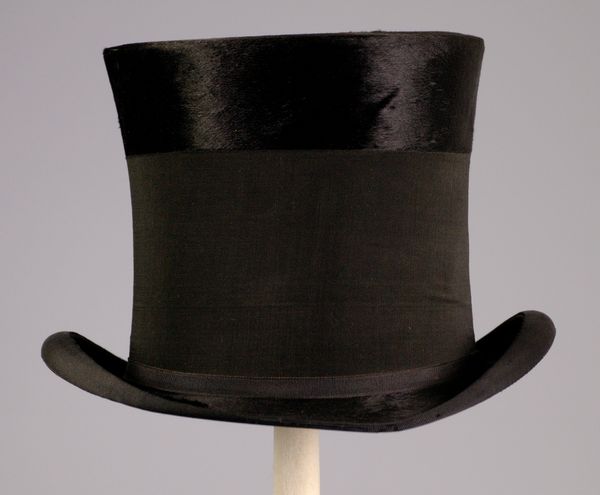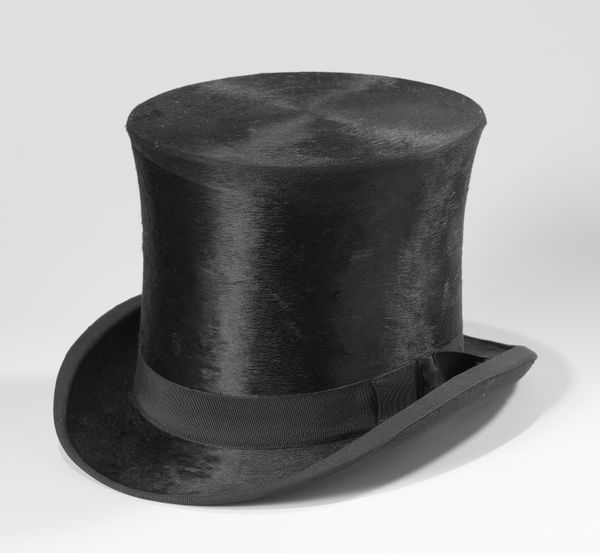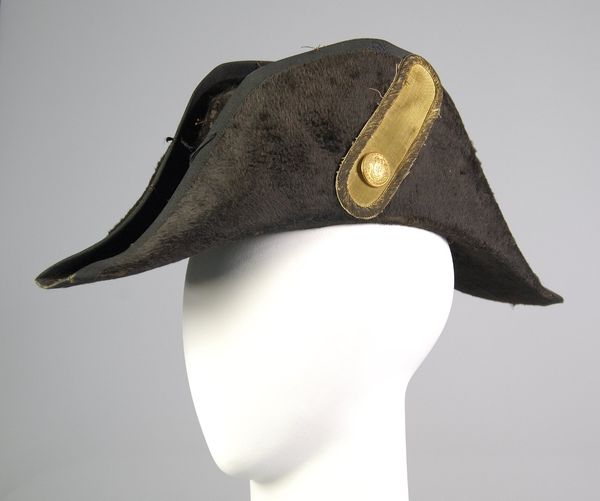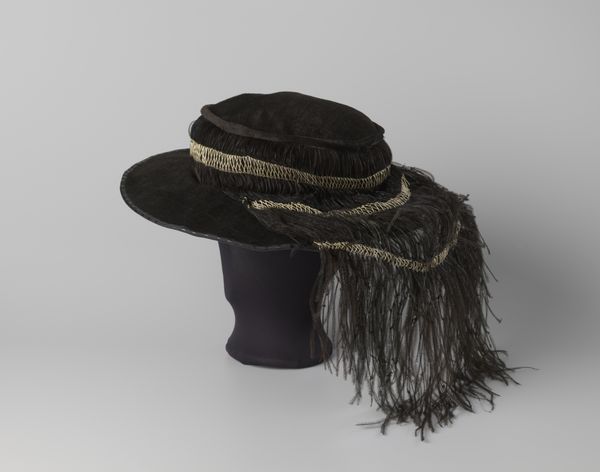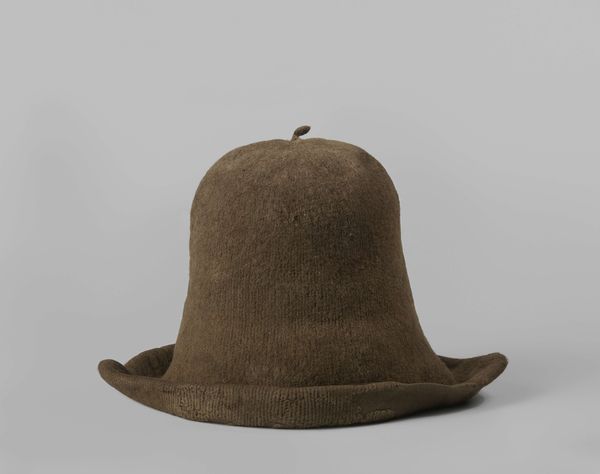
Hoed van Vrouw Schoonderwoert, marketenster Zuidhollandse Schutterij 1830-1831, buitenmodel c. 1830
0:00
0:00
mixed-media, photography
#
mixed-media
#
still-life-photography
#
sculpture
#
photography
Dimensions: width 35 cm, height 20 cm, depth 29.5 cm, height 17 cm, diameter 17 cm, diameter 33 cm
Copyright: Rijks Museum: Open Domain
Curator: We're looking at "Hat of Mrs. Schoonderwoert, camp follower South Holland Militia 1830-1831, oversized version," made around 1830. It appears to be a mixed media piece, using photography as part of its process. Editor: It’s quite striking. It's predominantly black, the texture looking almost like fur, though maybe a rough fabric. The one orange detail really pops. What can you tell us about it? Curator: Immediately, I think about the materials used and how they speak to social hierarchies of the time. The use of fur-like material, which could be beaver felt but might be a cheaper substitute, raises questions about the actual means of production, and also access to raw materials and how that speaks to the person who owned this hat and its use in the milieu of military forces in the field. What do you suppose "oversized" refers to here? Editor: Maybe it's meant to be performative, signaling status without actually using finer, more expensive materials. Do you mean was it literally big, or a big deal? Is it about its utility versus showiness? Curator: Exactly. A camp follower would have relied heavily on trade and barter. The embellishments suggest a desire for elevated status; a performative claim of importance achieved through the combination of available resources and prevailing fashion. That small burst of orange emphasizes resourcefulness. What does the integration of photography into the making suggest to you? Editor: Maybe using photography makes it more accessible or portable than if it were a sculpture... easier to share in publications? Curator: Precisely! The photograph allows it to exist and circulate in the realm of images, reaching a much wider audience beyond its physical presence. We can see how labor, display, and image-making become intrinsically linked in defining social roles, can't we? Editor: Yes, absolutely. Thanks, I’m now looking at it in a whole new light, thinking about the accessibility and labour that made this hat what it is, both then and now as an image. Curator: I'm glad! By analyzing its materiality, we reveal deeper societal narratives of labor, trade, and gender in the 19th century.
Comments
No comments
Be the first to comment and join the conversation on the ultimate creative platform.

